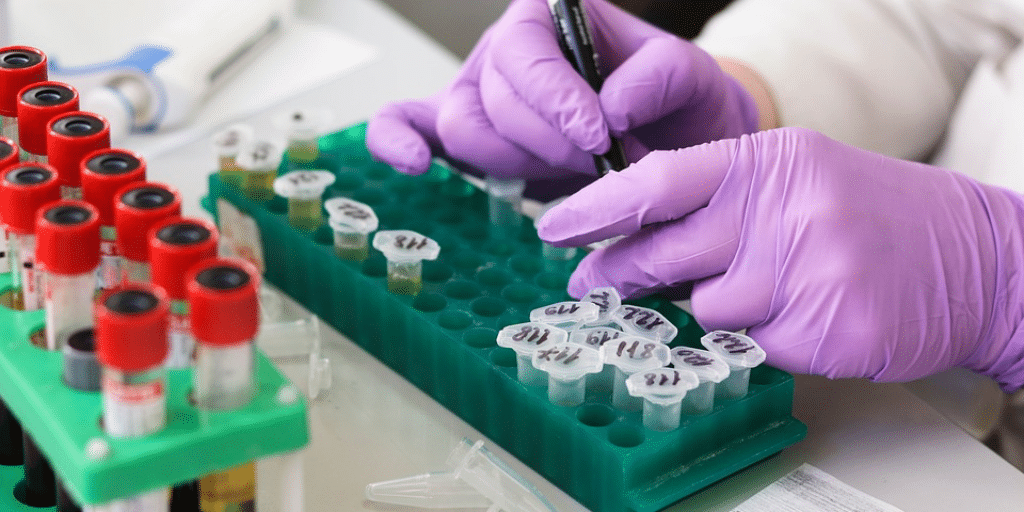The 28 of May is the international world blood cancer day, established by DKMS in 2014, to raise awareness of the disease. Every 35 seconds, someone around the globe is diagnosed with blood cancer. For most of them, a stem cell donation is the only chance of treatment. In 25 percent of the cases, a donor is found within the close family. If no donor is found within the family, there is an 80 percent chance of finding a donor through a national and international registry.
Today, over 8 million people worldwide are registered as potential blood stem cell donors with DKMS. Still, four out of ten people in need of a blood stem cell donation worldwide are unable to find a matching donor. The process of being listed in the registry until an actual donation comes up is like this:
How to register?
Almost every human has a genetic twin, which is someone with identic stem cells. The goal of the registry is finding this twin for every patient in need.
To get registered in the donor database, all it takes is a cheek smear. After online registration, the DKMS sends an envelope containing a cotton swab. This must be rubbed in the mucous membrane. Then it’s sent back, and the gathered DNA information is put into the registry.

After being part of the database, everything is done. Now the so-called human leukocyte antigen (HLA) decides if a donor and a patient are a match. Only if the HLA is similar in both, patient and donor, the organization will take action and call the donor for a possible donation.
How does donating work?
First, there are tests to check if one person fits the other. Then more healthcare tests follow to make sure the donor is healthy enough for the procedure.
Most commonly, stem cells are taken out of the blood. That usually takes about 4 hours because the needed cells are only found in a small number within the blood. In some cases, the donor must come the next day again and donate new blood.
In more complicated cases, the stem cells are taken out of the iliac crest. This only takes about one hour but is surgery under anesthetic. The whole surgical intervention leads to three days in the hospital. The most dangerous part of this considering the donor is the anesthesia itself.
Who can donate?
In Germany, anyone who is between the age of 18 and 55, in a good health condition and does not suffer a chronicle disease or is part of a specific risk group, can be registered for stem cell donation.
Lookout into the future
Seventy-four percent of all blood stem cell donations enabled by DKMS are sent abroad and must be delivered in perfect condition. After the cells have been donated, they immediately get picked up by a courier. The courier brings them personally to the patient’s hospital – no matter whether in Europe, the US, or Australia. Within Germany, traveling is not a big deal.
When it comes to faraway destinations around the world, transportation becomes critical for the whole donation. Blood stem cells must be stored and transported at temperatures between 2°C and 6°C. Besides, they must be transplanted within 72 hours after the extraction.
While traveling with an airplane, the stem cell supplement is stored in the onboard luggage. For this, it’s important that the stem cells are not exposed to the security X-Rays because the radiation is harmful to the cells.
The use of stem cells in the future has considerable potential. One example is the use of human stem cells to regenerate heart muscles. In his TEDx Talk from the beginning of May, Charles Murry, director at the center for cardiovascular biology in Seattle, describes the process and its possible impact in future healthcare.
No matter if the future or present, stem cells are temperature sensitive goods that must be cold chain monitored. The NelumBox is ready to deliver drugs, organs and stem cells around the world, using an innovative, active cooling system. For more information, feel free to send us an email to info(at)tec4med.com.
